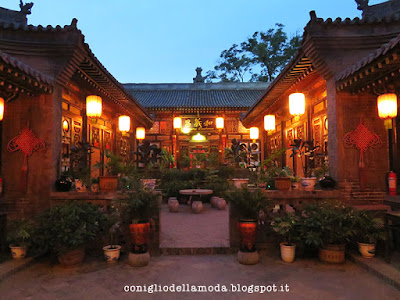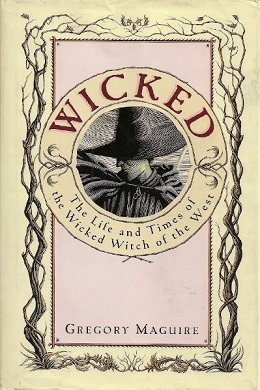Oggi andiamo alle grotte Yungang che contengono delle sculture buddiste che non solo sono le più antiche della Cina, ma anche particolarmente belle. Hanno influenze indiane, persiane e addirittura greche. Risalgono al V secolo e sono state realizzate dai Tuoba, una popolazione di lingua turca.
Per arrivarci dall'hotel prendiamo un autobus, rischiamo di sbagliare la fermata per cambiare e veniamo costretti a scendere a quella giusta da una famigliola che ha capito la situazione e ci accompagna addirittura alla fermata. Da lì prendiamo il 603 e in circa tre quarti d'ora arriviamo al sito.
Entriamo in un edificio moderno in cui facciamo il biglietto (125¥). Da lì si esce su un viale di colonne su elefanti che conduce al tempio Ling Yan, che si trova al centro di un laghetto.
Today we go to the Yungang Grottoes that contain Buddhist sculptures that are not only the oldest in China but also particularly beautiful. They have Indian, Persian and even Greek influences. They date back to the fifth century and were built by the Tuoba, a Turkish-speaking population.
To get there from the hotel we take a bus, we risk missing the stop were we had to commute, but a family who understands the situation forces us to get off to the right one and even walks us to the stop. From there we take the bus n°603 and in about three quarters of an hour we arrive at the site.
We enter a modern building where we buy the ticket (¥ 125). From there we walk on a boulevard flanked by columns on elephant statues that leads us to the Ling Yan temple, located in the center of a pond.
Il tempio è una ricostruzione moderna, ma sembra quasi antico. Attraversando una serie di cortili uno più bello dell'altro. Ci sono tocchi di colori aggiunti da nastri colorati e aiuole fiorite. Nel lago nuota una paperella gonfiabile gigante.
The temple is a modern reconstruction, but it seems almost ancient. We walk trough a series of courtyards one nicer than the other. There are color touches added by colorful ribbons and flowerbeds. In the lake swims a giant inflatable duck.
Da lì arriviamo alle grotte, che sono ben 252 e contengono 51.000 statue, in diverso stato di conservazione.Visitiamo un altro tempio sopra una cascata ed esploriamo le grotte, che sono meravigliose. Ci sono moltissime statue gigantesche, davvero impressionanti. Nonostante gli agenti atmosferici, molte conservano ancora tracce di colore. Vedere affreschi così vecchi fa venire i brividi. Alcune grotte sono protette da templi in legno relativamente recenti.
In alcune la roccia è intagliata per assomigliare ad una pagoda o per imitare l’interno di templi in legno. Dappertutto si trova il motivo dei 1000 Buddha, una serie di tanti piccoli Buddha incisi.
Alcune grotte sono in fase di restauro. Quasi in tutte si trovavano didascalie in inglese piuttosto buone.
La visita è veramente fantastica, a parte i momenti imbarazzanti in cui turisti cinesi ci fermano per fotografarci, chiedere la relazione fra noi, criticare l'inquadratura di un mio disegno e simili. Un gruppo di ragazzi addirittura ci circonda per dire con grande insistenza alla Pelosa Metà quanto è bello.
Alla fine del percorso si trova un museo sulle opere d'arte nelle grotte e la dinastia Wei, purtroppo con poche didascalie in inglese.
From there we reach the caves, which are 252 and contain 51,000 statues, in a different state of conservation. We see another temple over a waterfall and explore the caves, which are wonderful. There are gigantic, really impressive statues. Despite the atmospheric agents, many still have color traces. Seeing frescoes so old infuses me with a sense of awe. Some caves are protected by relatively recent wooden temples.
In some, the rock is carved to look like a pagoda or to imitate the interior of wooden temples. Everywhere, there is the 1000 Buddha motive, a series of many small engraved Buddhas.
Some caves are closed for resrotation. Almost all of them have pretty good English signs.
The visit is really great, apart from the embarrassing moments when people stopped us to take our picture, ask about the relationship between us, criticize the framing of my drawings and the like. A group of kids even surround us to say with great insistence to the Hairy Half how beautiful he is.
At the end of the trail there is a museum about the artwork of the caves and Wei dynasty, unfortunately with few English captions.
Usciamo dal sito che è ora di pranzo inoltrata. All'uscita c'è un quartiere pieno di bancarelle, negozi e ristoranti. Vediamo varie bancarelle che vendono biscotti di noci selvatiche fatti sul momento, battendo la pasta con un grosso martello. Ne compriamo un pacco per provare a 10 CNY (ma ancora non li abbiamo assaggiati...).
We leave the site well past lunch time. At the exit there is a neighborhood full of stalls, shops and restaurants. We see a number of stalls selling wild walnut biscuits made at the moment, beating the dough with a big hammer. We buy a pack to try them paying it 10 CNY (but we still haven't tasted them...).
Ci fermiamo in un ristorante a caso a mangiare. Prendiamo due piatti di tagliatelle, tradizionali e con maiale e funghi. Sono abbastanza sicura che le tagliatelle siano fatte a mano, però non sono niente di speciale.
We stop at a random restaurant to eat. We take two noodles servings, traditional and pork and mushroom. I'm pretty sure the noodles are made by hand, but still they are nothing special.
Prendiamo l'autobus n°603 e torniamo a Datong, alla città vecchia. Di giorno la via pedonale è animatissima, piena di bancarelle e negozietti. E' ora di fare un po' di sano shopping. Ad una bancarella compro un vestito di pizzo marrone chiaro per 75 CNY, uno bianco costituito da una sottoveste e una parte trasparente ricamato a fiori (le trasparenze fra le ragazze cinesi andavano tantissimo) a 85 CNY, una maglietta di pizzo bianco con una spilletta che si è rotta quasi subito a 45 CNY e una maglietta con decorazioni di nastro e pon pon a 35 CNY. Uno dei vestiti è coreano. Io sono estremamente soddisfatta, la proprietaria della bancarella ancora di più.
We take bus number 603 and return to Datong, to the old town. By day the pedestrian street is animated, full of stalls and shops. It's time to do some healthy shopping. At a stall I buy a light brown lace dress for 75 CNY, a white one made of a slip and a transparent embroidered flower piece (it seemed transparent fabric was big in Chinese women's fashion) for 85 CNY, a white lace t-shirt with a brooch that broke almost immediately for 45 CNY and a T-shirt with ribbon and pom pom trim decorations for 35 CNY. One of the clothes is Korean. I am extremely pleased, the owner of the stand even more.
Arriviamo alla piazza principale. E' enorme, circondata da edifici tradizionali in legno con negozi e ristoranti su ogni lato e percorsa da ragazzini in rollerblade e bambini in go kart, davvero bella e animata.
We arrive at the main square. It's huge, surrounded by traditional wooden buildings with shops and restaurants on every side, run by kids with rollerblades and kids in go karts. The atmosphere is really nice and animated.
Abbiamo tempo di visitare solo il monastero Huayan (65 CNY), bello, ma non davvero speciale, dopo tutti quelli che abbiamo visitato. Le cose più interessanti sono la stanza sotterranea, completamente rivestita di metallo dorato, e la vista dalla pagoda, da cui si vede un intero quartiere abbandonato e semidistrutto, probabilmente per ampliare la ricostruzione del centro storico.
We only have time to visit the Huayan Monastery (65 CNY), beautiful, but not really special, after all we visited. The most interesting things are the underground room, fully covered with golden metal, and the view from the pagoda, from which I see an abandoned and semi-demolished neighborhood, probably where will externd the reconstruction of the historic center.
Passiamo ad un supermercato vicino al nostro hotel per prendere qualcosa da mangiare il giorno dopo in treno. Siamo stanchi, per cui decidiamo di comprare lì anche la cena. Non ci siamo accorti che abbiamo preso cibo freddo, così finiamo per scaldare panini al vapore, focacce e una specie di frittata, in maniera artigianale, usando il vapore dell'acqua scaldata con il bollitore.
Musei e shopping costosi e cena barbona, siamo i soliti.
We go to a supermarket near our hotel to take something to eat the next day on the train. We are tired, so we decide to buy dinner there too. We did not realize that we took cold food, so we end up warming buns and some kind of bread and omelette, craftily, using the steam of water boiled with the kettle.
Expensive museums and shopping and bum-like dinner, we are the usual living contradiction.


















































